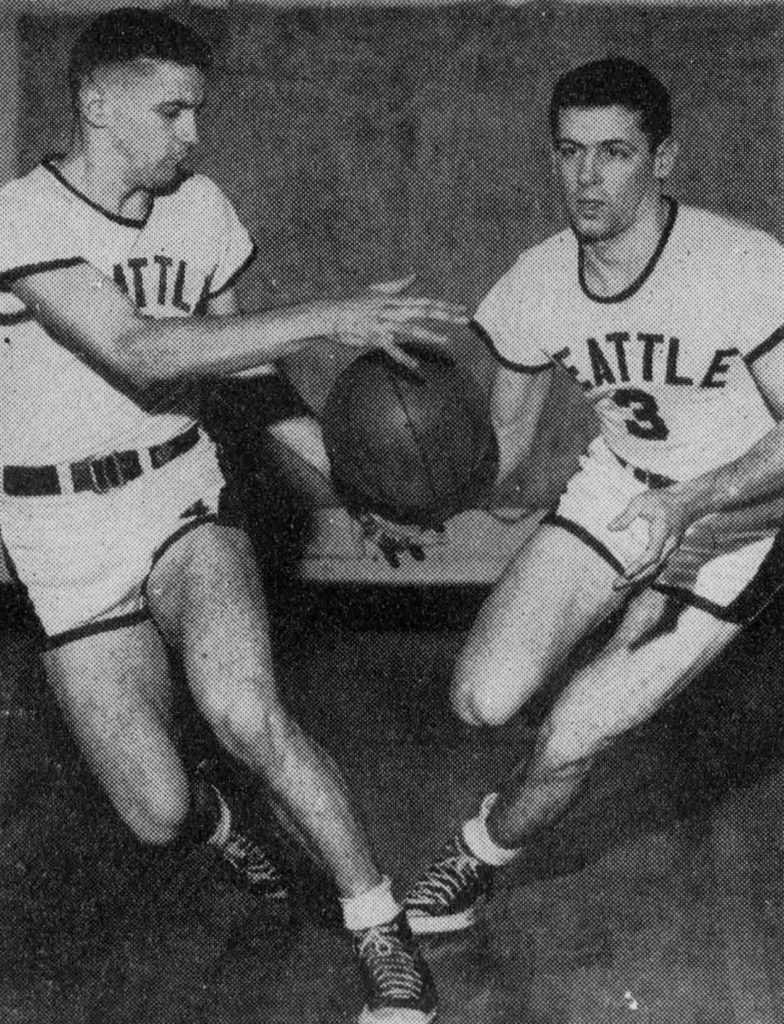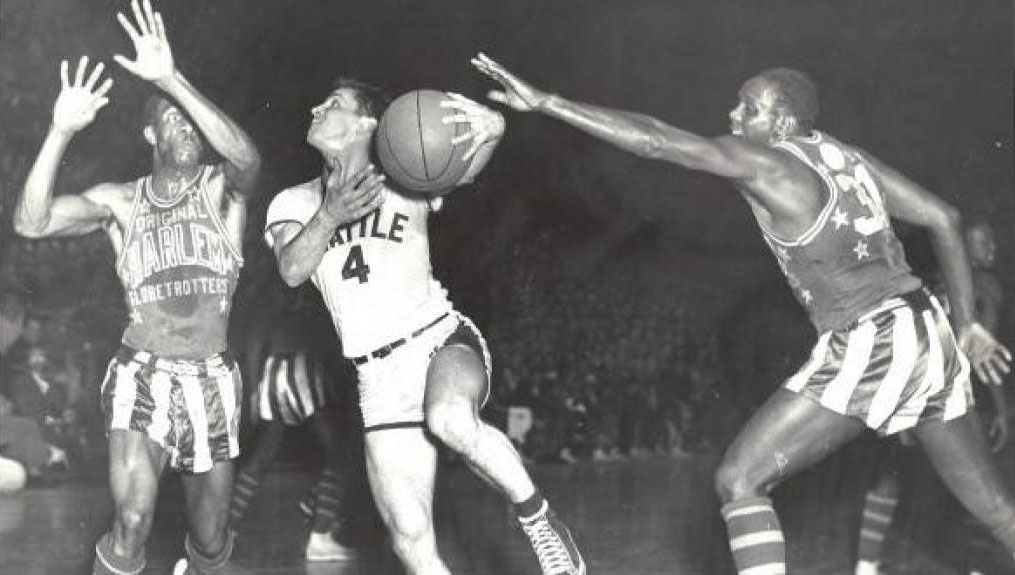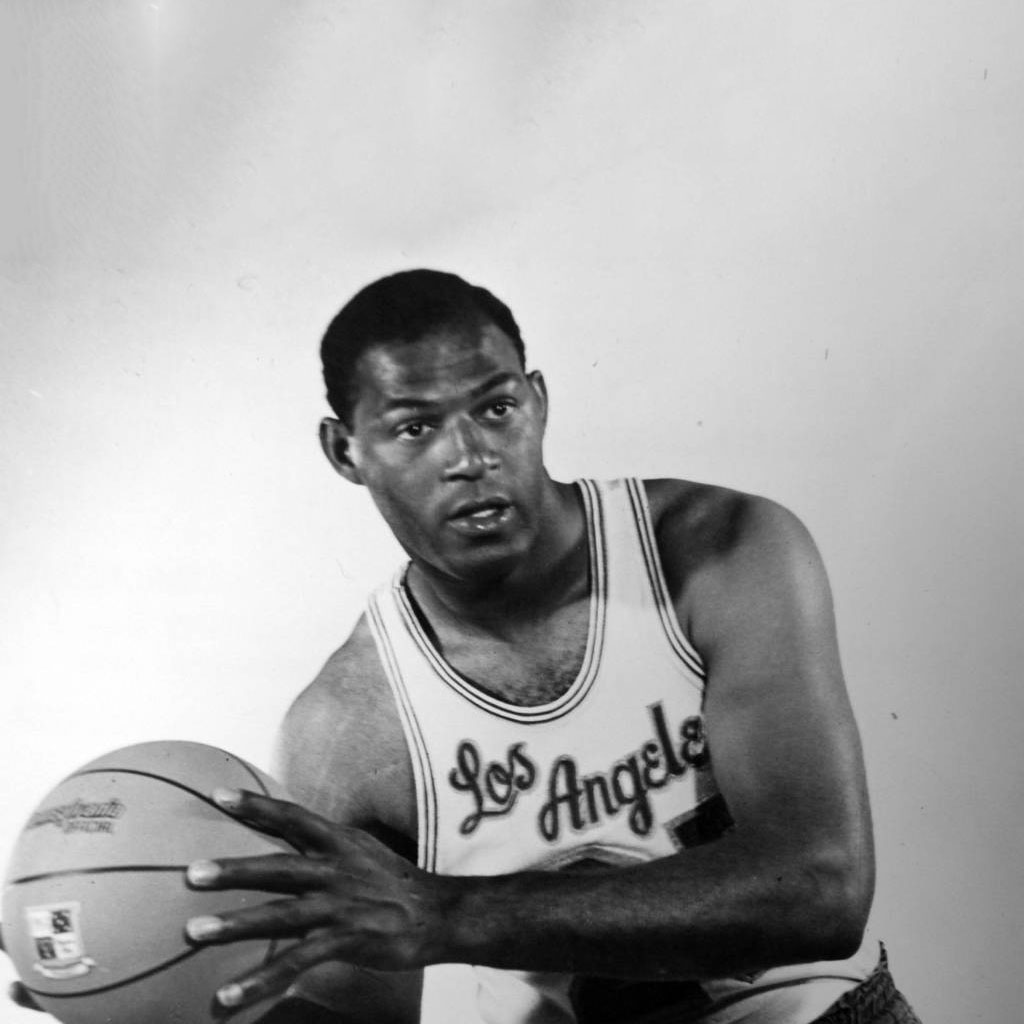From beating the Globetrotters to allowing women on the men’s team to boasting an alumni as the first American to summit Mount Everest, Seattle University’s athletic program has had dominating accomplishments in everything from basketball to mountaineering.

New Jersey natives Eddie and Johnny O’Brien were recruited by head basketball and basketball coach Al Brightman in 1950.
The recruitment of Eddie and Johnny O’Brien, the 5 foot 9 “Gold Dust Twins,” in 1950, paved the way for nearly three decades of success. The twins both played baseball and basketball, recording 90 wins and 17 losses on the court, and 62 wins and 14 losses on the pitch. Their highlights mainly came from their basketball careers where Johnny earned an All- American first team honor and Eddie earned All-American third team.
The O’Brien twins were living in New Jersey when Seattle U baseball and basketball head coach at the time, Al Brightman, offered them a scholarship. “Education was a major part of what we wanted to do at the Seattle U. Basketball and baseball were very kind to us and Seattle U was especially kind in granting us a scholarship,” Johny O’Brien said.
One of the focal points of their careers was their astounding win against the famous Harlem Globetrotters. The Globetrotters who had agreed to play three NCAA games to raise money for the 1952 fund for the Olympic basketball team. Their original opponents were University of Washington, Notre Dame and Army. However, when Washington declined, Seattle U was more than happy to play.
A close game ended in Seattle U’s favor, denying the Globetrotters what would have been their 3000th win in the packed Hec Edmunson Pavillion on the University of Washington campus. Johnny O’Brien was the nation’s leading scorer at the time and contributed 43 points to the final score of 84-81.

Johnny O’Brien put up 43 points to defeat the world-famous Globetrotters.
“At the end of the game when we won, the court was just full of people immediately and it took about a half an hour to get off the court and back to the locker room,” Johnny O’Brien said.
This last-minute charity game garnered Seattle U national attention in newspaper and magazines— including the New York Times— as well as an invitation to the 1953 NCAA Tournament.
“Incidentally, [Abe] Saperstein [founder and owner of the Globetrotters] got so mad when we beat them that he cancelled the games against Notre Dame and the Army, and they never did play them,” Johnny O’Brien said.
The following year, the team travelled to New York and beat New York University in Madison Square Garden. The final score was 102- 101, which was the first time two college teams had both gone over 100 points in Madison Square Garden. “Those two games kind of identified Seattle University as a legitimate D1 basketball team and they were great memories to have,” Johnny O’Brien said.
That wouldn’t be the only “first” the team would be a part of. In their senior year, the O’Brien twins led Seattle U to its first NCAA tournament. In his 1951-52 season, Johnny O’Brien became the first collegiate player to score over 1000 points in a season, crediting his success to his teammates.
“It takes considerate effort by your teammates to get you the ball and do the things to enable you to score that many points,” Johnny O’Brien said. “The other four guys could shoot from outside, so teams had to go out and guard them. And I was inside playing the post so it was very easy to get the ball to me. And if you got the ball you got to do something with it—so you might as well put it in the hoop.”
Johnny O’Brien remains Seattle U’s all-time leading scorer with 2,733 points to his name.
The O’Brien twins were drafted to the NBA, but decided to pursue baseball instead. They both signed contacts with the Pittsburgh Pirates. They put Seattle U on the map, helping to attract players from all over the nation. One of those players, the most famous athlete to come from Seattle U, was Elgin Baylor.
Baylor transferred from Idaho and continued to lead Seattle U to success, most notably in 1958. A record that still holds today, Baylor scored a whopping 60 points to secure a win that didn’t seem possible over University of Portland.
That same year, Baylor took Seattle U basketball the furthest it would ever go: the championship game of the NCAA tournament. Seattle U upset No. 1 ranked Kansas in the semifinals before falling to Kentucky in the championship game. Even though the team didn’t win, Baylor was awarded MVP of the tournament.
In his three seasons, Baylor averaged 31.3 points per game and scored over 50 points on four separate occasions. He led the NCAA in rebounds during the 1956-1957 season and was second in scoring average. Baylor was an All-American both of his years at Seattle U and won the 1958 college basketball player of the year before being drafted to the (then) Minneapolis Lakers his junior year.
Baylor has been an 11-time NBA all-star and is honored in the NBA Hall of Fame. He still holds four season records, three career records and one individual record at Seattle U. After Baylor departed, Arkansas- native Eddie Miles chose Seattle in 1960 even though he was sought after by more than 50 colleges.
Miles was known as the “Man with the Golden Arm” for his impressive jump shot. He continued to lead three Seattle U teams to NCAA post-season play and was the third leading scorer in Seattle U history with 1,874 points to his name. Miles was the fourth pick in the 1963 draft by the Detroit Pistons. He spent nine seasons in the NBA, with the Pistons, Baltimore Bullets and New York Knicks.
Seattle U basketball was relentless in the 1960s, and at one point sent more players to the NBA than any other college in the country. Tom Workman, arguably one of the best local basketball players to come from Washington, joined the Seattle U roster a year after Miles was drafted in 1964.
Workman was part of the unforgettable win over Texas Western, as depicted in the Disney movie “Glory Road”. Texas Western, known today as University of Texas at El Paso, was the first team to win an NCAA basketball championship with an all-black starting lineup. In their extraordinary season, they only faced one loss in a game against Seattle U where Workman hit the game-winning jumper from the top of the key.
Basketball isn’t the only highlight from that time period, but it did earn the original attention needed to make Seattle U recognized nationally. Seattle U was also a leader in the area of racial diversity at the time, both in athletics and in the school population as a whole, with the integrated squad known as the “United Nations team.”
Pat Lesser (Harbottle) came to Seattle U in 1952, with the U.S. Girl’s Junior and Western Girl’s Junior crowns in golf already under her belt. There was just one issue— Seattle U didn’t have a women’s golf team. Lesser proved that would be no problem as she quickly climbed the ranks and was the No. 1 player on the men’s team for five out of their 13 games.
Lesser went on to win the 1953 Women’s Collegiate Championship and became the 1955 Women’s Amateur Champion. She was also the first woman to be selected as the “man of the year” by the Seattle Post- Intelligencer in 1955. Lesser wasn’t the only woman to defy gender stereotypes. Janet Hopps (Adkisson) played on the men’s tennis team during her time at Seattle U, further challenging the idea of what it means to be a woman in sports.
No other school had two women on men’s teams in the NCAA at the same time. But they weren’t just women on men’s teams, they were No. 1 ranked women. And Hopps was the first female to be top- ranked for both men and women nationally. She beat 70 percent of her male opponents and competed in the women’s all-collegiate tennis tournament—where she won singles three times and doubles twice. She also won the national college girls’ tennis singles championship (1954- 56) and the U.S. clay court doubles championship (1955).
Hopps was never able to claim a NCAA championship, because the tournament wasn’t recognized as so until the year after she left. She had tremendous success after her college career, reaching the fourth round at Wimbledon in 1959 and 1960 and winning singles titles at the U.S. indoor championship in 1961. She was never truly honored for her talent until 1988, when she was inducted into the State of Washington Sports hall of fame. The following year she was inducted into the ITS Women’s collegiate tennis hall of fame. At the peak of Hopps’ career, she was ranked No. 11 in the world.
Tom Gorman didn’t come to Seattle U until a decade later in 1965, but he continued the success Hopps had introduced on the tennis court. Partnered with Steve Hopps—Janet Hopp’s younger brother—they formed the top doubles duo in the Northwest. He led Seattle U to the NCAA tournament in 1968 where he finished eighth.
Gorman reached the semifinals of Wimbledon in 1971 and the U.S. Open in 1973. He also captained the U.S. team that won the 1972 Davis cup and was ranked as high as No. 10 in the world.
Jim Whittaker came to Seattle U on a basketball scholarship, however he was dismissed from the team when Coach Brightman learned he was spending his free time hiking and skiing. This wouldn’t go to waste— Whittaker became the first American to reach the summit of Mount Everest. He summited on May 1, 1963, running out of oxygen on the way, but still managing to reach the peak. He was also the first full-time employee of Recreational Equipment Inc. (REI) and eventually became the company’s CEO.
Whittaker is known for other famous expeditions, such as the Earth Day 20 International Peace Climb that brought dozens of climbers together from the U.S., USSR and China to summit Mount Everest, hauling off trash left on the mountain on the way down. Whittaker also led the first ascent of Mount Kennedy with John F. Kennedy’s younger brother, Robert F. Kennedy.
All the athletes mentioned have been inducted into Seattle University’s Hall of Fame. After financial issues in the region in the late 1970s, Seattle U voluntarily downgraded to the NAIA. Seattle remained there for over three decades, before reinstating their Division I membership just six years ago in 2012. While there haven’t been achievements comparable to the 50s-80s, Seattle U has seen a number of accomplishments since joining the Western Athletic Conference.
Michelle can be reached at
sports@su-spectator.com









